Foreword
As Europe navigates the rapidly evolving digital economy, fostering a fair data economy driven by European values is essential for innovation and economic growth. This approach balances the interests of individuals, businesses and society, ultimately enhancing well-being, competitiveness and societal development.
The movement towards Web 3.0 represents an interesting evolution in the data economy. By Web 3.0, we mean blockchain technology, which can help to give users greater control over their data and enhances privacy by promoting the principles of decentralisation. Built on open protocols and governed by community voting and decentralised mechanisms, Web 3.0 can potentially ensure a more transparent and equitable digital landscape. As is typical for emerging technologies, Web 3.0 has its challenges, including fraud and manipulation. Sitra has previously highlighted these issues in our Web 3.0 sustainability memorandum.
At the same time, the industry is maturing, evidenced by regulatory developments such as the Markets in Crypto Assets (MiCA) framework in Europe, and the approval of Bitcoin and Ethereum ETFs in the USA, providing mainstream investment avenues and increasing institutional participation. Institutional adoption will especially affect the development of asset tokenisation.
In this memorandum, we will focus on analysing tokenisation, which has emerged as one of the application areas of Web 3.0 with the greatest potential. Tokenisation is the process of converting the rights to an asset into a digital token on a blockchain network, enabling the digital representation of a broad range of assets.
Tokenisation is seeing increased adoption in various sectors and is attracting interest from regulatory bodies aiming to harness its potential while ensuring security and compliance. Tokenisation was identified as a key strategic area for future investment in Sitra’s recent Data Strategy working paper. It can facilitate new business models and foster innovation. However, the adoption of tokenisation also hinges on consumer acceptance, necessitating educational efforts regarding its benefits. At the same time, privacy and security concerns need to be addressed, and the environmental impact of tokenisation reduced through sustainable practices. As Europe progresses with its digital transformation, integrating tokenisation into its data strategy could enhance its Digital Single Market and strengthen Europe’s leadership in data-driven economics.
This working paper aims to elucidate the principles of tokenisation, spotlighting major initiatives and regulatory development in both the private and public sectors. It seeks to enhance the understanding of tokenisation, detailing its opportunities and challenges and makes recommendations for actions to undertake in adopting tokenisation. In this memorandum we focus on providing European viewpoint.
We want to give special thanks to the authors of this paper, Eugenio Reggianini and Erwin Voloder, as well as to Sitra’s team for their collaborative efforts. We hope this working paper will serve as a useful resource for anyone interested in the field of tokenisation.
25.6.2024
Kristo Lehtonen
Director, Sitra
Heikki Aura
Senior Lead, Sitra
Summary
One of the key trends in internet development is Web 3.0, which is built on underlying blockchain technology. The benefits of blockchain technology include transparency, efficiency, and decentralized management. However, as an emerging technology, Web 3.0 has faced challenges such as manipulation and fraud. Despite these challenges, there are several interesting applications areas within Web 3.0. Recent regulatory developments in Europe and the USA are paving the way for broader adoption of Web 3.0 applications by establishing clear guidelines, enhancing investor protection, and increasing transparency.
Tokenisation has emerged as one the most interesting areas within Web 3.0. Tokenisation is the process of converting various assets into digital tokens on a blockchain. Several assets can be tokenised, both digital and real-world assets (RWA), such as real estate, artwork, wines, stocks, intellectual property, carbon credits, and personal and industrial data. The potential benefit of tokenisation is that it can help to make assets easier to buy and sell, increase accessibility by allowing a broader range of investors to participate, and improve transparency by providing clear, immutable records of ownership and transactions. Market projections estimate the potential market value of tokenised global assets could reach $16 trillion by 2030. Several leading global companies and organisations such as Blackrock, Société Générale, and the World Bank are actively exploring tokenisation opportunities. Despite the very broad spectrum of categories potentially affected by tokenisation, it is still an unknown technology trend, and it is also unclear what a more tokenised economy and society would look like.
Successful tokenisation depends on a robust digital infrastructure, particularly digital identity verification and digital money. These components ensure secure, efficient, and compliant transactions, building trust among participants. Regulation and standardisation are also key enablers in this process. In Europe, the Markets in Crypto-Assets (MiCA) regulation plays a crucial role by providing a comprehensive framework for crypto assets. Alongside MiCA, other regulatory frameworks such as the Data Act support the development of a secure and transparent token economy in Europe.
To further the adoption of tokenisation, it is essential to enhance efforts to educate stakeholders on its benefits and risks, addressing concerns related to privacy, fraud and security. Additionally, pilot projects and regulatory sandboxes are crucial for testing and refining the use cases and underlying digital infrastructure required to tokenise different asset classes. Close collaboration between regulators, startups, and blockchain companies is critical to foster an environment of innovation and development. Tokenisation, especially of industrial and personal data, can play an important role in helping to implement key EU data regulations such as The Data Act.
Europe has a unique opportunity to lead in tokenisation by leveraging its advanced digital infrastructure and fair data economy principles. Initiatives such as Tokenise Europe 2025 reflect the EU’s commitment to developing a token economy, promoting awareness by engaging stakeholders from various sectors, developing education, and encouraging innovation. Through collaboration, sound regulation, and the strategic use of an advanced digital infrastructure, Europe can harness the full potential of tokenisation.
Tiivistelmä
Tokenisaatio on noussut yhdeksi hajautetun verkon eli web 3.0 -kehityksen mielenkiintoisimmista alueista. Tokenisaatio on lohkoketjuteknologiaan perustuva prosessi, jossa omaisuuteen kohdistuva oikeus kytketään lohkoketjuun ja erilaisia omaisuusluokkia muunnetaan digitaaliseen muotoon, rahakkeiksi (token). Sekä digitaalisia että reaalimaailman omaisuusluokkia voidaan tokenisoida, kuten esimerkiksi kiinteistöjä, taideteoksia, osakkeita immateriaalioikeuksia tai henkilö- ja teollisuusdataa. Tokenisaation etuina on pidetty esimerkiksi sitä, että se helpottaa ja mahdollistaa uudenlaisiin kohteisiin sijoittamisen sekä omistuksen jakamisen pienempiin yksikköihin eli digitaalisiin rahakkeisiin. Lisäksi se voi parantaa läpinäkyvyyttä tarjoa-malla selkeät ja muuttumattomat omistus- ja kaupankäyntirekisterit.
Tokenisoitujen omaisuusluokkien markkina-arvo voi arvioiden mukaan nousta jopa 16 biljoonaan dollariin maailmanlaajuisesti vuoteen 2030 mennessä. Useat johtavat kansainväliset yritykset ja organisaatiot, kuten Blackrock, Société Générale ja Maailmanpankki, tutkivat aktiivisesti tokenisaation mahdollisuuksia. Tokenisaatio on kuitenkin edelleen varsin tuntematon teknologiatrendi eikä sen mahdollisuudet ole kaikilta osin täsmentyneet. Meille ei ole selvää, miltä tokenisoitu talous ja yhteiskunta mahdollisesti tulevaisuudessa näyttäisivät.
Tokenisaatiokehityksen edistäminen edellyttää vankkaa digitaalista infrastruktuuria, erityisesti huolellista digitaalisen identiteetin varmistamista ja digitaalista rahaa. Digitaalinen raha tarkoittaa sähköisessä muodossa olevaa valuuttaa, joka voi olla esimerkiksi keskuspankkien liikkeelle laskemaa digitaalista valuuttaa (CBDC) tai lohkoketjupohjainen vakaavaluutta. Niiden avulla pystytään varmistamaan turvalliset, tehokkaat ja sääntöjen mukaiset transaktiot. Sääntely ja standardointi ovatkin keskeisessä roolissa tokenisaation kehityksessä. EU:n kryptovara-asetus (MiCA) tarjoaa kattavan kehyksen kryptovaluutoille. MiCA:n rinnalla muut sääntelykehykset, kuten data-asetus, tukevat reilun ja läpinäkyvän talouden kehitystä Euroopassa.
Tokenisaation edistämiseksi on tärkeää edistää eri toimijoiden osaamista kehityksen hyödyistä sekä siihen liittyvistä riskeistä, kuten petoksista ja turvallisuusuhista. Tärkeässä osassa kehitystä on matalan kynnyksen innovaatiotoiminnan edistäminen. Tiivis yhteistyö viranomaisten, julkisen sektorin toimijoiden ja yritysten välillä on tärkeää
Euroopalla on ainutlaatuinen mahdollisuus olla tokenisaation edelläkävijä. Aloitteet kuten Tokenise Europe 2025 osoittavat, että EU on sitoutunut tokenisaation kehittämiseen. Tämän aloitteen kautta EU on pyrkinyt lisäämään tietoisuutta, koulutusta ja innovointia eri toimijoiden välillä. Yhteistyön, toimivan sääntelyn ja kehittyneen digitaalisen infra-struktuurin avulla Eurooppa voi hyödyntää tokenisaation kaikki mahdollisuudet.
Sammanfattning
En av de viktigaste trenderna inom internetutveckling är Web 3.0, som bygger på underliggande blockkedja teknologi. Fördelarna med blockkedja teknologi inkluderar transparens, effektivitet och decentraliserad förvaltning. Men som en framväxande teknologi har Web 3.0 fortfarande utmaningar som manipulation och bedrägeri. Trots dessa utmaningar finns det flera intressanta tillämpningsområden inom Web 3.0. Nya regleringsutvecklingar i Europa och USA banar väg för bredare användning av Web 3.0-applikationer genom att etablera tydliga riktlinjer, förbättra investerarskyddet och öka transparensen.
Tokenisering har framträtt som ett av de mest intressanta områdena inom Web 3.0. Tokenisering är processen att omvandla olika tillgångar till digitala tokens på en blockchain. Flera tillgångar kan tokeniseras, både digitala och verkliga tillgångar, såsom fastigheter, konstverk, viner, aktier, immateriella rättigheter, koldioxidkrediter, personliga och industriella data. Den potentiella fördelen med tokenisering är att det kan göra tillgångar lättare att köpa och sälja, öka tillgängligheten genom att tillåta ett bredare spektrum av investerare att delta, och förbättra transparensen genom att tillhandahålla tydliga, oföränderliga register över ägande och transaktioner. Marknadsprognoser uppskattar att det potentiella marknadsvärdet för tokeniserade globala tillgångar kan nå 16 biljoner dollar år 2030. Flera ledande globala företag och organisationer såsom Blackrock, Société Générale, Världsbanken utforskar aktivt tokeniseringsmöjligheter. Trots det mycket breda spektrumet av kategorier som potentiellt påverkas av tokenisering, är det fortfarande en okänd teknologitrend och också oklart hur en mer tokeniserad ekonomi och samhälle skulle se ut.
Framgångsrik tokenisering beror på robust digital infrastruktur, särskilt digital identitetsverifiering och digitala pengar. Dessa komponenter säkerställer säkra, effektiva och efterlevnadsvänliga transaktioner, vilket bygger förtroende bland deltagarna. Reglering och standardisering är också nyckelfaktorer i denna process. I Europeiska unionen spelar MiCA- förordningen (Markets in Crypto-Assets) en avgörande roll genom att tillhandahålla en omfattande ram för kryptotillgångar. Tillsammans med MiCA-förordningen stödjer andra regleringsramar såsom dataakten (Data Act) utvecklingen av en säker och transparent tokenekonomi i Europa.
För att främja antagandet av tokenisering är det viktigt att öka insatserna för att utbilda intressenter om dess fördelar och risker, och att ta itu med oro relaterad till integritet, bedrägeri och säkerhet. Dessutom är pilotprojekt och regulatoriska sandlådor avgörande för att testa och förfina användningsfallen och den underliggande digitala infrastrukturen som krävs för att tokenisera olika tillgångsklasser. Nära samarbete mellan regulatorer, startups och blockkedja företag är kritiskt för att främja en miljö av innovation och utveckling. Tokenisering av särskilt industriella och personliga data kan spela en viktig roll i att hjälpa till att implementera EU:s viktiga datalagar, såsom dataakten.
Europa har en unik möjlighet att leda inom tokenisering genom att utnyttja sin avancerade digitala infrastruktur och rättvisa dataprinciper. Initiativ som Tokenise Europe 2025 återspeglar EU:s engagemang för att utveckla en tokenekonomi genom att engagera intressenter från olika sektorer för att främja medvetenhet, utbildning och innovation. Genom samarbete, sund reglering och strategisk användning av avancerad digital infrastruktur kan Europa utnyttja tokeniseringens fulla potential.
1. Introduction to the tokenisation trend
In the rapidly evolving landscape of digital technologies, Web 3.0 and blockchain have emerged as a new source of innovations, products and business models. Within this ecosystem, tokenisation is gaining traction in the market and we are witnessing the growth of a morew robust technical development cycle.
Tokenisation is the process of converting the rights to an asset into a digital token on a blockchain network, enabling the digital representation of a broad range of assets. Tokenisation will impact a diverse range of asset classes including real estate, art and commodities, as well as financial instruments such as stocks and bonds, intangible assets such as copyrights, patents, and trademarks, and even personal identity. Currently, it is estimated that circa USD 3 billion of assets are tokenised. Additionally, asset tokenisation is forecast to be a significant market in the future. According to Boston Consulting Group, the market value of the tokenisation of global assets is forecast to grow to USD 16 trillion by 2030. To put this into perspective, the total GDP of the European Union in recent years has been approximately USD 15.6 trillion. Larry Fink, the CEO of Blackrock, the world’s largest asset management company, recently described tokenisation as “the next generation for markets.” It is important to recognise that various actors may be acting in their own self-interest, so estimates and predictions should be approached with caution. Nonetheless, as highlighted later in Chapter 3, there is a clear trend towards exploring tokenisation opportunities by both new entrants and established industry players.
Tokenisation enables asset owners to tap into wider markets, overcoming barriers that traditionally limited their investor base. This opens the possibility of further democratising investment opportunities that benefit asset owners through potentially higher returns, while at the same time contributing to a broader, dynamic and inclusive market, where diverse assets can be traded more freely and efficiently. It also streamlines processes through automation by reducing paperwork, transaction costs and settlement times. This in turn boosts efficiency. The entire process is underpinned by blockchain technology which ensures immutable records, fostering trust by minimising fraud. The potential for programmable assets enabled by smart contracts can support the uptake of innovative financial products and improve revenue streams. Smart contracts are self-executing contracts with the terms directly written into code, allowing for automated, transparent, and secure transactions without the need for intermediaries.
Although tokenisation holds potential, it remains relatively nascent and unfamiliar to most investors, companies and policymakers. Consequently, there is a need for education on how tokenisation benefits different stakeholders, and to highlight its risks. The adoption of asset tokenisation still faces several challenges. One hurdle is the fragmentation of blockchain platform technologies, which complicates interoperability and the seamless exchange of assets across different blockchain networks. Also, from a consumer perspective, usability issues are still present including complex user interfaces and the lack of technical knowledge required to navigate these platforms effectively. Trust in service providers also remains a concern; ensuring the security and reliability of tokenisation platforms is paramount to building consumer confidence. These challenges are typical of any new technology and part of the early maturity stage. Taken together, tokenisation does not live in a vacuum. To efficiently harness its potential, industrial policy and financial innovation must be considered in tandem with use-case development regulatory clarity. Dissemination will in turn require the guiding hand of a public-private approach.
Ultimately, the adoption of tokenisation use cases and services hinges especially on both retail and institutional investors and consumers. Tokenisation offers consumers increased security by converting sensitive data into tokens, significantly reducing the risk of data breaches and fraud. It also enhances transparency and traceability, allowing consumers to verify the provenance and authenticity of assets, such as in supply chains or digital ownership. Additionally, tokenisation enables fractional ownership, making high-value assets such as real estate and art more accessible and affordable to a broader range of investors. As such, the willingness of consumers to engage with tokenised assets will determine the extent to which tokenisation will influence the future landscape. In this regard, the demand from private citizens can drive companies and governments to develop and offer relevant tokenisation solutions, thereby shaping the consumer landscape of a token economy in Europe. However, they must be educated on and encouraged to interact with tokenised solutions to build the critical mass needed for a ‘tokenised Europe’ to move from concept to reality.
Despite the challenges, the potential upside of tokenisation is too significant to be ignored. Europe can influence the international development of this nascent industry. Europe’s commitment to a Digital Single Market and the advent of the Markets in Crypto-Assets (MiCA) legislation can employ tokenisation as a vehicle to determine the trajectory of global standards – encouraging innovation through citizen-centric and sustainable use cases.
This working paper aims to provide an overview of the tokenisation process, outline which asset classes can be tokenised, and provide examples of tokenisation. The paper will also assess the benefits that tokenisation can bring and outline the challenges still remaining. We will also explore the linkages between digital money and identification. We will also strategically revisit the Tokenise Europe 2025 initiative, highlighting how it can serve as a benchmark for adopting a comprehensive approach to addressing Europe’s digital priorities.
In conclusion, we will provide recommendations on how we would like to see Europe advancing tokenisation.
2. How tokenisation works
Tokenisation is a digital process that assigns a digital identity, called a token, to various assets. For tokenisation to be effective, both digital identity verification and digital currencies are critical infrastructure elements. These components are crucial for fully realising the benefits of tokenisation in the modern digital economy.
Successful tokenisation relies on critical infrastructure components, particularly digital identity verification and digital money. These elements are essential to ensure that transactions are secure, efficient, and comply with regulatory standards. Digital identity verification helps in establishing trust among participants by confirming the legitimacy of the parties involved. Meanwhile, digital money facilitates seamless and immediate transactions, reducing friction and enhancing the overall efficiency of the tokenisation process. Together, these components maintain the integrity and functionality of the tokenisation ecosystem, making them crucial for fully realising the benefits of tokenisation in the modern digital economy. In this chapter, we examine how the tokenisation process works, which asset classes can be tokenised, and how both digital identity and digital currencies are critical enablers for tokenisation.
Tokenisation is a digital process that divides an asset, such as a painting, music, a song, or real estate into smaller parts called tokens. Each token represents a share of the asset. The asset’s total value is assessed, and then it is divided into smaller units. Each unit is subsequently assigned a digital token. These tokens, created on a blockchain, track every transaction, ensuring clear and tamper-proof ownership details. Once issued, tokens can be exchanged on digital platforms or marketplaces, allowing token holders to sell or transfer their shares to others interested in the asset.
There are two main types of tokenised assets, fungible and non-fungible. Fungible tokenised assets are interchangeable and divisible meaning each unit of the tokenised asset has the same market value, validity and can be divided into as many parts as configured during its issuance. Non-fungible tokenised assets are unique and non-interchangeable meaning tokens cannot be replaced with other tokens of the same type, as each represents a unique value and attribute.
To integrate traditional assets into the digital world, particularly within the Web 3.0 framework, there needs to be a system in place that can convert these physical assets into digital tokens. Several parties are involved in the tokenisation process, each playing a critical role in transforming assets into digital tokens. Asset originators, who are the owners or issuers of the original asset, are fundamental to this process. Technology companies provide the technological infrastructure necessary for tokenisation, ensuring that the process is secure and efficient. Protocol developers create the underlying blockchain protocols that support the tokenisation and management of digital assets. Additionally, private market exchanges facilitate the trading of these tokenised assets, offering a platform for buyers and sellers to engage in transactions.
The actual process of asset tokenisation involves several key steps and stages. First, the underlying asset must be registered, and the token configured, which involves officially documenting the asset on the blockchain and creating its digital token representation. Setting compliance rules is another crucial step, as it establishes the regulatory and compliance guidelines for the tokenised asset. Once this is done, the tokens need to be securely stored, managed, and distributed to investors and other stakeholders. This structured approach ensures a smooth and secure tokenisation process.
Successful tokenisation also depends on a robust digital infrastructure, with digital identity and digital money being two of its most critical components. We will now provide an overview of these essential elements and highlight key ongoing initiatives in these areas.
2.1 Digital money forms a key foundation for tokenisation
Digital currencies are pivotal components in the evolving landscape of asset tokenisation. They provide the medium for transacting in the digital economy, while digital identity ensures that these transactions are secure, verifiable, and compliant with global regulatory standards. In the evolving digital finance space, three primary forms of tokenised money are proliferating: stablecoins, central bank digital currencies (CBDCs) and tokenised deposits. Each type has unique characteristics and implications for the strategic settlement functions of asset tokenisation.
Stablecoins are digital tokens designed to combine the stability of traditional currencies such as the euro with the benefits of digital assets. They achieve this by being pegged to an underlying fiat currency, such as the euro or US dollar, or to other assets such as commodities. This mechanism provides stability, making it suitable for various transactions while reducing the price volatility often seen in cryptocurrencies. Most stablecoins are pegged to specific fiat currencies, offering a familiar value reference that enhances their usability for transactions. Although the global stablecoin market is currently dominated by stablecoins pegged to the US dollar, euro-based stablecoins have a much smaller market share. Increasing the presence of euro-based stablecoins is in Europe’s long-term interest.
CBDCs are digital forms of national currency issued by central banks, representing a direct liability to the holder. Various central banks around the world are considering implementing or already experimenting with CBDCs. For the general public, CBDCs can be either direct (where the central bank handles all payments and records) or intermediated (where authorised intermediaries manage the digital currency on behalf of individuals and businesses). Wholesale CBDCs are restricted to financial institutions that facilitate large value and high-volume transactions in wholesale financial markets and interbank settlements, providing a secure and efficient settlement asset for interbank transfers and securities transactions.
Tokenised deposits are a third form of digital money, used as a way to represent traditional bank deposits in digital form. Essentially, they are digital versions of the money held in a bank account, created using cryptographic technology. Tokenised deposits offer a modern, digital way to manage and use bank deposits, providing more flexibility, faster transactions, and innovative financial solutions. Perhaps the most significant project around tokenised deposits is Singapore’s Project Guardian, which explores the issuance of deposit tokens on public blockchains to enhance liquidity and programmability.
2.2 Digital identity as a key enabler for tokenisation
Verified digital identity of both buyers and sellers plays a crucial role in ensuring secure and trustworthy transactions. The verification of digital identities helps build trust between the parties involved. For buyers, having a verified digital identity proves that they are who they claim to be. This is essential for sellers as it enables them to feel confident they are dealing with a legitimate party. This reduces the risk of fraud. Similarly, for sellers, a verified digital identity proves that they are genuine and that the asset they are tokenising and selling is legitimate. This mutual trust facilitates smoother transactions.
Moreover, compliance with regulations is a significant aspect of financial transactions, including those involving tokenised assets. Digital identities help both buyers and sellers comply with these regulations by providing a transparent and verifiable record of their identities, which is crucial for preventing money laundering and other illegal activities. Enhanced security is another important benefit of digital identities. They use advanced cryptographic methods to protect personal information, allowing both buyers and sellers to share their identity details securely without the risk of data being tampered with or stolen.
The use of digital identities also streamlines the transaction process. Verification and approval become much faster and more efficient with digital identities, eliminating the need for manual checks or paper-based verification. This speeds up the buying and selling process significantly. Additionally, having clear and verifiable digital identities for both parties helps reduce the risk of disputes. If any questions arise about the legitimacy of a transaction, the digital identities provide a clear record of who was involved and their credentials, aiding quick dispute resolution.
To illustrate how this works in practice, imagine a buyer wants to buy a tokenised piece of real estate. The buyer would use their digital identity to verify their identity with the seller. This could include proof of funds, creditworthiness and personal identification. The digital identity ensures the seller that the buyer is a legitimate party with the means to complete the purchase. On the other hand, the seller would use their digital identity to prove ownership of the property and their right to sell it. This might include property deeds, licenses and other relevant documentation. The seller’s digital identity reassures the buyer that the property is real and is legally theirs to sell.
When both the buyer and seller have verified digital identities, the transaction can proceed with confidence. The use of digital identities ensures that all parties are legitimate, the assets are genuine, and the transaction is secure and compliant with all necessary regulations. This creates a safer, faster and more trustworthy environment for asset tokenisation and related transactions.
2.3 Key initiatives in digital identity for asset tokenisation
Verifiable Credentials (VCs), as defined by the World Wide Web Consortium (W3C), offer a versatile data model for expressing credentials on the web in a cryptographically secure, privacy-preserving and machine-verifiable manner. VCs empower users with greater control over their data, allowing them to hold tamper-proof digital representations of attributes such as educational qualifications or professional licenses. Users can create Verifiable Presentations (VPs) to selectively share their credentials with verifiers, ensuring authenticity and integrity through digital signatures and cryptographic techniques such as Zero-Knowledge Proofs (ZKPs). VCs and VPs form the backbone of a system architecture that supports off-chain storage of identification within a privacy-preserving environment, which can be leveraged to issue specific tokens on-chain.
Non-Fungible Tokens (NFTs) represent unique digital assets that cannot be replicated, making them ideal for tokenising real-world assets with inherent uniqueness such as artworks, collectibles or real estate. NFTs enhance transparency and security by enabling ownership and transferability to be tracked and verified on a blockchain. Dynamic NFTs (dNFTs) can change their underlying metadata automatically, and this is useful in fields such as tokenisation and gamification.
Soulbound Tokens (SBTs) build on the concept of NFTs but are designed to be permanently linked to a specific entity or individual, making them suitable for representing non-transferable attributes such as educational qualifications or professional licenses. Generated through smart contracts, SBTs ensure that the token can only be controlled by the designated owner. However, their immutability raises concerns about GDPR compliance regarding data retention and the right to be forgotten.
Several public projects are leveraging digital identity services for real-world asset tokenisation. The European Digital Identity Wallet (EUDIW) framework allows users to store VCs as Qualified Electronic Attestations (QEAs) issued by Qualified Trust Service Providers (QTSPs). The wallet facilitates seamless access to services and eliminates the need for repeated credential verification across platforms. Users can present VPs from their digital wallet for identity verification and proof of funds, streamlining onboarding processes and fostering trust.
2.4 Difference between on-chain tokenisation and traditional fractionalisation
On-chain tokenisation also differs from traditional fractionalisation in several ways. Traditional fractionalisation relies on centralised entities such as Real Estate Investment Trusts (REITs), Exchange Traded Funds (ETFs) or Mutual Funds (MFs) to manage the asset segmentation process and oversee investor ownership. These segmented assets are typically listed on centralised exchanges or platforms for trading and investment purposes. However, the technical infrastructure supporting traditional fractionalisation may lack transparency due to centralised control, potentially leading to information asymmetry among investors. Investors in turn hold small fractions of an asset, allowing them to proportionally benefit from the asset’s value and returns. Investors also incur costs associated with intermediary services provided by asset management firms, exchanges and regulatory bodies overseeing the fractionalisation process. Additionally, any corporate actions related to the asset (e.g. dividends, mergers and acquisitions) are managed by a centralised entity. Overall, traditional fractionalisation may restrict market access for certain investors due to high barriers to entry, regulatory constraints and high minimum capital requirements.
Tokenisation divides assets such as art, IP rights, and financial instruments into digital tokens on a blockchain, enabling fractional ownership and secure transactions. It comes in two forms: fungible tokens, which are interchangeable, and non-fungible tokens, which are unique and indivisible. This process enhances accessibility, liquidity and transparency, making high-value assets more attainable for a broader audience. Digital money, including stablecoins, central bank digital currencies (CBDCs), and tokenised deposits could further facilitate seamless transactions within this ecosystem. Furthermore, a critical feature of this process involves digital identity verification to ensure trust and compliance and build confidence among participants.
Key initiatives, such as verifiable credentials and non-fungible tokens may be used to support the secure and transparent management of digital assets. Looking ahead, tokenisation has the potential to democratise access to traditionally high-cost investments, fostering greater inclusivity. Regulatory frameworks will need to evolve to address the complexities of digital identity, data privacy and compliance in a decentralised environment. Advancements in blockchain technology and digital identity solutions will therefore be crucial for ensuring the security, scalability and transparency of tokenised ecosystems, paving the way for a more accessible and efficient digital economy.
3. Tokenisation: evidence from the market
Case examples of companies and institutions show how the tokenisation landscape is being shaped by different actors leveraging this technology. These include both startups as well as major established companies and institutions.
In this section, we highlight selected case examples of companies and institutions driving innovation across various tokenisation categories. These initiatives span from large multinational financial institutions, which are developing and launching their own tokenisation use cases in structured products, funds, financial market infrastructures, and digital money assets. This trend reflects a growing recognition that the potential of tokenisation extends well beyond the initial ’crypto hype.’ Additionally, the tokenisation landscape is being significantly shaped by new and smaller companies leveraging this technology. Startups and venture capital firms are increasingly attracted to tokenisation. Below, we introduce several interesting companies exploring tokenisation opportunities for various asset classes.
3.1 Allinfra tokenises renewable energy production facilities
Allinfra tokenises infrastructure projects focusing on renewable energy to democratize investment access. The platform allows for fractional ownership in projects such as solar farms, offering investors a share of the revenue and benefits. Through diligent project evaluation and legal preparation, Allinfra ensures compliance and facilitates investments, providing real-time performance data and analytics for investors.
3.2 Centrifuge tokenises invoices, carbon credits and other real-world assets
Centrifuge bridges Decentralised Finance (DeFi) with real-world assets (RWAs) such as invoices and carbon credits, making them tradable on the blockchain. This not only improves liquidity for businesses but also expands investment opportunities within the DeFi space. An example includes a small business using the Centrifuge app to tokenise outstanding invoices for immediate capital, facilitating investments with interest returns for DeFi users.
3.3 Obligate – tokenising debt instruments
Obligate, a Swiss platform, streamlines the issuance and trading of blockchain-based bonds, simplifying regulatory compliance and fractional ownership. Investors engage through Know Your Customer (KYC) and Anti Money Laundering (AML) verified process, investing via digital wallets. The platform uses smart contracts for automatic interest payments and bond redemption, enhancing efficiency. A Finnish stablecoin issuer successfully issued a EUROe-denominated bond through Obligate, achieving significant cost and time savings.
3.4 Tokeny offers a platform solution for companies to tokenise their assets
Tokeny provides a solution for tokenising real-world assets in private markets, using the ERC-3643 standard to ensure compliance and manage securities. It enables companies to issue, manage and transfer security tokens with ease, offering a streamlined process for verifying investor eligibility and facilitating investments into ventures such as sustainable restaurants.
3.5 Traditional financial companies and tokenisation
Traditional financial companies are also exploring the possibility of tokenisation. These include hedge funds, broker dealers, banks and asset managers. They are increasingly leveraging tokenisation strategies across structured products, financial market infrastructure, digital money assets and the fund industry. This strategic adaptation involves the conversion of tangible assets into digital tokens on blockchain networks. The tokenisation of money market funds is particularly significant as it offers enhanced liquidity, improved transparency and the promise of higher yields, which may broaden the range of investors seeking efficient cash management solutions. Moreover, these financial entities are actively experimenting with tokenisation on public blockchains, recognising the potential of decentralised networks within traditional financial systems. This experimentation points to a wider shift in the willingness to accept blockchain-based solutions on a philosophical level coupled with significant investments made by different entities to bring solutions to market.
Société Générale is a leading French multinational financial services group, offering a wide range of banking and financial services. It ranks as the sixth largest bank in Europe by total assets. Through its digital-assets focused subsidiary (SG FORGE), Société Générale has initiated several significant tokenisation projects. One notable initiative includes the issuance of a digital green bond as a security token on the Ethereum blockchain. This project, involving institutional investors AXA Investment Managers and Generali Investments, aims to enhance transparency and traceability of ESG data while improving transaction fluidity and settlement speed. Additionally, SG FORGE has launched the EUR CoinVertible, an institutional-grade stablecoin designed for on-chain transactions, corporate treasury and liquidity management. The subsidiary also engages with broader tokenisation challenges to encourage the development of compliant security token frameworks and innovative settlement solutions.
Blackrock is the world’s largest asset manager, with USD 10 trillion in assets under management. The BlackRock USD Institutional Digital Liquidity Fund (also known as BUIDL) is a tokenised money market fund (MMF) launched on the Ethereum blockchain. It provides a digital representation of U.S. Treasury bills and cash equivalents, aiming to offer institutional investors a secure and transparent investment vehicle with the benefits of blockchain technology. BUIDL allows investors to earn U.S. dollar yields through blockchain-based tokens, enhancing efficiency and transparency in transactions and settlements. The fund, developed in collaboration with Securitize, is part of BlackRock’s broader strategy to integrate digital assets into traditional finance.
Build has secured substantial inflows since its launch. In its first week, the fund captured over USD 240 million in deposits, reflecting significant interest from institutional investors. Notably, Ondo Finance contributed USD 95 million to the fund, which aims to offer secure and efficient investment in U.S. Treasury bills, repo agreements and cash equivalents through blockchain technology.
Besides these companies, several other large companies and institutions are piloting various tokenisation applications and use cases. Figure 1 below showcases additional global initiatives spanning the public and private sectors with central banks also actively engaged in different pilot projects in concert with established industry players.
Figure 1: Global initiatives within tokenisation
The initiatives are compiled based on publicly available data from market participants and institutions developing tokenised offerings.
| Participant | Project Initiative | Tokenised Asset | Region | Blockchain | Amount | Status |
|---|---|---|---|---|---|---|
| Citibank | N/A | Private Equity Fund | US | Avalanche (Spruce Subnet) | N/A | Launched |
| Euroclear + Banque de France | DL3S Platform | French sovereign debt post trade functionalities | EU | Hyperledger Fabric | N/A | Pilot |
| Euroclear + World Bank | Digital Securities Issuance Service (D-SI) | Digital bond | EU | R3 Corda | USD 106m | Launched |
| Goldman Sachs | GS DAP | Tokenisation Platform | US | DAML | N/A | Launched |
| Fidelity | Under Project Guardian | Treasury tokenisation | Global | Ethereum | USD 50m | Launched |
| Franklin Templeton | Benji | US Government Money Market Fund | US | Polygon | N/A | Launched |
| Hamilton Lane + Securitize | N/A | Fund tokenisation | US | Polygon | NA | In progress |
| Hong Kong Monetary Authority (HKMA) | Project Ensemble | wCBDC, tokenised deposits | Asia | N/A | N/A | Launched |
| HSBC + HKMA | N/A | Digital green bond | Asia | HSCB Orion | USD 756m | Launched |
| HSBC | N/A | Tokenised gold | Aisa | HSCB Orion | N/A | Launched |
| JP Morgan | Onyx | Digital money asset | Global | Ethereum | Settled USD 950bn | Launched |
| KKR + Securitize | Health Care Strategic Growth Fund II | Fund tokenisation | US | Avalanche | N/A | In progress |
| Mastercard | MC Digital Enablement Service | Payment services | US | Ethereum | N/A | Launched |
| Mirae Asset Management | N/A | Tokenised securities | Asia | Polygon | N/A | In progress |
| Monetary Authority of Singapore | Global Layer 1 (GL1) | Various | Asia | N/A | N/A | Pilot |
| T.Rowe Price | N/A | FX Swaps | US | Avalanche (Spruce Subnet) | N/A | Launched |
| Wisdom Tree | N/A | Exchange Traded Funds Money Market Funds | US | N/A | USD 120m | Launched |
The above table points to a surging institutional demand for tokenised products and services, underscoring the value proposition of blockchain as a vehicle for unlocking new market opportunities. Most recently, predominantly US-based large fund managers have broadened their offering, opening up access to tokenised products for both retail and accredited investors. Many of these incumbents have been at the nucleus of global finance for decades, which has brought with it the hard-earned trust of customers around the world. This trust is a form of social capital that can help them to benefit also in this market. At the same time, there is reason to believe that tokenisation may lead to more synergy and collaboration than otherwise suggested. Given the US domination of these pilots, it would be in European interest to see more European companies and institutions follow suit.
3.6. Tokenisation examples in Finland
In Finland, tokenisation is at a relatively early stage. Nevertheless, some companies and organisations have piloted tokenisation. Here is a short overview of some of the most relevant Finnish projects and pilots.
The Finnish National Gallery has developed the alusta.art platform, which enables creators to tokenise their digital artwork, whether it be photos, paintings, audio or video. The aim of this platform is to offer creators a new way to digitally create, manage and monetise their creations providing them with greater control over their intellectual property and potentially giving them access to new revenue streams and audiences.
Another pilot is Equilibrium Ltd.’s SME stock tokenisation pilot, which explores the potential of tokenising stocks for small and medium-sized enterprises. The aim of the pilot is to ascertain how tokenisation could make it easier for these businesses to access funding and for investors to diversify their portfolios.
In the textile industry, the Digital Product Passport pilots have used tokenised solutions to enhance transparency and traceability, providing detailed information about the origin and lifecycle of products.
Membrance Finance Ltd. has issued a fully regulated euro-pegged stablecoin called EUROe. Stablecoins provide a key digital infrastructure element that is needed in the tokenisation process.
4. Regulatory and technology harmonisation
Regulation plays a crucial role in the evolving landscape of tokenisation by establishing the legal and compliance frameworks necessary for secure and transparent digital asset transactions.
Regulation ensures that tokenised assets are managed within defined legal boundaries, protecting investors and maintaining market integrity. Effective regulation addresses issues such as data privacy, anti-money laundering (AML), and know-your-customer (KYC) requirements, fostering trust among participants. As tokenisation continues to grow, regulatory frameworks must adapt to balance innovation with the protection of individual and collective interests. In this chapter we look at the key regulations related to asset tokenisation and the kinds of standardisation work that is ongoing in this field.
Europe has taken strides to ensure regulation keeps pace with innovation in the blockchain sector. Since unveiling its blockchain strategy in 2018 (European Commission 2018), the European Union has identified blockchain as one of the key frontier technologies, particularly within the context of its ambitions for a data-driven economy and the establishment of a Digital Single Market (DSM) (European Commission 2020). Within the realm of European regulation, the emergence of tokenisation intersects with various legislative initiatives and regulatory frameworks aimed at fostering innovation, ensuring consumer protection and bolstering the EU’s competitiveness in the global digital economy.
4.1. Regulatory overview in European Union
The introduction of the EU Digital Finance Package, which notably includes the landmark Markets in Crypto-Assets Regulation (MiCA), establishes a comprehensive regulatory framework for crypto-assets, including certain tokenised assets, thereby enhancing investor protection and market integrity while promoting innovation. Adopted in June 2023, MiCA delineates categories of crypto-assets, lays down requirements for crypto-asset issuers and service providers and outlines regulatory oversight mechanisms through level II regulatory measures. MiCA also builds on established e-money rules laid down by the Electronic Money Directive (EMD) which govern the issuance and use of electronic money tokens (EMTs) in each Member State which captures fiat-backed stablecoins such as USDC or EUROC. It also introduces another class of token known as Asset-Referenced Tokens (ARTs) which may reference one or more underlying assets such as commodities and fiat currencies. Taken together, MiCA lays down strict rules for the issuance, custody and redemption of ARTs and EMTs. MiCA also establishes robust investor protection and anti-money laundering guidelines while setting equally robust capital requirements.
Asset-Referenced Tokens (ARTs) and Electronic Money Tokens (EMTs) are pivotal elements in the digital finance ecosystem, each serving distinct roles and governed by specific regulatory frameworks. ARTs, such as TUSD, are designed to represent one or more underlying assets and strive to maintain a stable value through asset backing. This requires ART issuers to secure authorization from National Competent Authorities (NCAs) and ensure the secure custody of underlying assets, possibly through licensed custodians. They must also offer redemption guarantees, allowing holders to exchange tokens for underlying assets, and adhere to strict investor protection protocols including transparent risk disclosures and regular audits. On the other hand, EMTs represent a digital form of fiat currency, backed on a one-to-one basis with the intent of mirroring the value of the fiat currency they represent. Issuers of EMTs must be authorised as electronic money institutions (EMIs) under the e-money Directive, safeguard funds, and maintain fiat currency reserves equivalent to the tokens issued. EMTs guarantee redemption at par value to fiat currency, necessitating issuers to comply with comprehensive consumer protection regulations and maintain adequate capital reserves to cover outstanding tokens.
Both ART and EMT issuers are bound by anti-money laundering (AML) regulations, requiring customer due diligence (CDD) and transaction monitoring. However, the capital requirements may vary, with ART issuers facing potential obligations depending on their operational scope, including liquidity requirements, whereas EMT issuers must always ensure liquidity and capital adequacy to support their issuance and operational stress. This delineation underscores the tailored approaches to ensuring stability, transparency, and regulatory compliance in the digital asset space, reflecting the nuanced differences between asset-backed tokens and digital representations of fiat currency.
MiCA may capture certain types of tokenised assets such as stablecoins or potentially NFTs when they are issued in a larger series, but there are certain types of tokenised assets that remain out of scope of MiCA. Broadly speaking, different types of tokenised financial instruments such as debt instruments or equity liabilities, and fund shares or securities could fall under well-established financial regulation such as the Markets in Financial Instruments Directive (MiFID II). Importantly, there are also persistent regulatory gaps with regards to certain types of tokenised assets that need to be considered. In the case of real estate, tokenising direct ownership of immovable property such as a warehouse or a rental building is difficult to do outside of using a special purpose vehicle (SPV) and tokenising its underlying shares. This is because the legal frameworks in many civil law jurisdictions do not allow for the tokenisation of associated rights such as leasing costs or maintenance fees directly into the underlying instrument itself. These gaps are not necessarily a consequence of technological immaturity as in principle, the tokenisation of associated rights is possible. However, reconciling it with the civil law of European Member States remains challenging.
Complementing MiCA, the DLT Pilot Regime (DLTPR), established as part of the Digital Finance Package, targets a broad spectrum of economic actors in the European financial system including banks, Fintech startups, asset managers, technology solution providers and regulatory bodies. The DLTPR enables the creation of a regulatory sandbox, giving a diverse range of stakeholders the chance to explore the potential benefits and challenges of integrating distributed ledger technology across financial services through tokenisation and the creation of DLT native financial market infrastructures. The application process for the DLT Pilot Regime involves several critical steps. Applicants must ensure their project qualifies under the regime, which is designed for DLT market infrastructures facilitating the trading and post-trading of financial instruments.
Additionally, applicants need to review the guidelines set by the European Securities and Markets Authority (ESMA) and national competent authorities (NCAs). It is also important to prepare comprehensive documentation, including a detailed business plan, risk assessment documentation and compliance documentation in line with relevant EU regulations such as AML, KYC, and GDPR. Before submitting the final application, applicants are also encouraged to engage in preliminary discussions with their NCA for feedback. The NCA will review the application, potentially requesting additional information. If approved, the DLT market infrastructure will be subject to ongoing regulatory oversight to ensure compliance. The regime also includes innovation safeguards and may grant temporary exemptions to foster innovation while maintaining investor protection and market integrity.
4.2 Key standardisation initiatives for the tokenised economy
Standardisation initiatives are crucial for blockchain and tokenisation as they may ensure interoperability, allowing different platforms to communicate and operate seamlessly enhancing the utility and liquidity of tokenised assets. Standardisation provides benchmarks for security, building trust among users and regulators, and streamlining compliance with legal requirements. Standardised frameworks promote efficiency and scalability by eliminating unnecessary repetition, allowing developers to focus on innovation. . They also lower barriers to entry, encouraging broader market adoption and fostering innovation on a stable foundation. Additionally, standards ensure transparency and accountability, facilitating auditing and verification processes. Overall, standardisation reduces costs, making blockchain technologies more accessible and enabling global integration for a decentralised digital economy.
At present, the standardisation efforts globally are a patchwork of publicly and privately led initiatives focusing on heterogenous goals. They include efforts within:
- The World Wide Web Consortium (W3C), the International – Organisation for Standardisation (ISO) and industry-driven approaches such as Ethereum Improvement Proposals (EIPs) and sovereign blockchain projects. Within the W3C, the Verifiable Credentials Data Model (VC Data Model) aims to standardise the representation of verifiable credentials (e.g. digital identities) using decentralised identifiers (DIDs) and Verifiable Credentials (VCs).
- In parallel, the Decentralised Identity Foundation (DIF) works on specifications for DIDs.
These efforts are aimed broadly at standardising data and schema for identification.
- ISO/TC/307 focuses on developing standards for blockchain and distributed ledger technologies, addressing aspects including smart contracts, tokenisation and interoperability.
- At the European level, the European Telecommunications Standards Institute (ETSI), the European Committee for Standardisation (CEN), and the European Committee for Electrotechnical Standardisation (CENELEC) are all actively involved in standardisation efforts related to tokenisation. ETSI is focusing on developing technical specifications and standards for blockchain and distributed ledger technologies, including tokenisation, defining protocols, interfaces and security mechanisms for tokenisation processes within telecommunications and digital services. (ETSI).
- CEN-CENELEC are working on standardisation initiatives related to tokenisation within sectors such as finance, healthcare and supply chain management.
On the industry side, ERC standards of the Ethereum blockchain demonstrate efforts to standardise token interfaces and functionalities within the Ethereum ecosystem. The recently validated ERC-3643 (‘T-REX protocol’) represents a new industry-led initiative to create standards for enterprise-ready tokenisation.
These proposals help shape the direction and development of protocols and are an important part of the evolution of major blockchain networks. Standardisation is both top-down led by international institutions, and national and regional bodies, and bottom-up with the relevant parties coming together to promote coherence. The applications are horizontal across diverse industries.
5. Conclusions and recommendations
Successful implementation of tokenisation will require piloting, a robust regulatory framework, standardisation work, awareness creation and education while at the same time providing necessary protection for consumers and investors.
Tokenisation of various asset classes holds significant potential to drive innovation across Europe. Major global companies, particularly those from the US, are already actively exploring tokenisation opportunities, highlighting the market’s importance and potential. While much attention is currently focused on other technologies such as artificial intelligence, Europe and its member states should also actively pursue blockchain technologies and tokenisation.
Tokenisation can offer significant benefits for Europe, its citizens, and companies by enhancing financial inclusion, improving transparency, and enabling innovative business models that drive economic growth and competitiveness. Additionally, it can unlock capital for investment in various asset classes from real world to digital assets, strengthening Europe’s competitiveness by offering increased liquidity for both asset owners and investors. Although the full benefits of tokenisation may not be immediate, market estimates show significant long-term potential, making it an important strategic area for development and investment.
How should Europe pursue development opportunities related to tokenisation? Below, we outline our recommendations, which we believe will help Europe enhance its competitiveness while ensuring high security and protection standards.
- The European Union needs to support similar programs to Tokenise Europe 2025 to further advance the development of a token economy. The key current initiative at the European level, Tokenise Europe 2025, was established by the European Commission and the German Banking Association. This initiative aimed to encourage the development of a robust token economy in Europe by 2025, engaging representatives from sectors such as payment services, banking, energy, automotive, and digital assets. Its primary objectives were to raise awareness, foster education, and facilitate stakeholder communication to promote the benefits of tokenisation and address its challenges. Moving forward, continuing this work with a new, similar strategy is recommended.
- The European Union and its member states should encourage and enable European companies to pilot different tokenisation services and applications while also offering access to regulatory sandboxes. Pilots are necessary for testing blockchain and tokenisation applications. They play a crucial role in identifying market needs, refining usability and addressing consumer protection concerns. They also help identify which asset classes benefit most from tokenisation. European actors should have access to regulatory sandboxes that offer a controlled environment for startups and corporations to develop and test tokenisation technologies while engaging with regulators. These sandboxes can focus on vertical regulations such as financial, ESG, and trust services, as well as broader data management regulations such as the Data Act. Piloting Data Act related tokenisation initiatives can facilitate its effective deployment. The Data Act mandates data sharing between businesses and public sector bodies to create a competitive data economy. Tokenisation can help implement the Data Act by providing a transparent, secure, and efficient framework for data exchange, ensuring compliance with the Data Act while promoting innovation and economic growth in the industrial sector. This approach aligns with the EU Data Act objectives of making industrial data more accessible and usable while ensuring robust data governance and privacy.
- To nurture the grassroots and decentralised ethos of Web 3.0, especially in the creator economy, one of the most promising areas for tokenisation, the EU should undertake several actions. Firstly, create educational programmes and resources that empower creators with knowledge about blockchain technology and tokenisation. Secondly, foster community-driven initiatives and platforms that facilitate collaboration and knowledge-sharing among creators, developers, cultural institutions, and entrepreneurs within the Web 3.0 ecosystem. This could also be tied to other application areas of Web 3.0, particularly Decentralised Autonomous Organisations (DAOs) as a decentralised governance structure.
- Active participation and support must be offered by policy makers and Member States in order to ensure the involvement of stakeholders in the key standardisation work and interoperability initiatives related to tokenisation and blockchain. Success of the relevant EU regulation is measured by the efficiency in the implementation and enforcement of regulation, including active measures to ensure interoperability between frameworks and standards. Policy makers should take an active role in supporting the harmonisation of smart contract interactions across digital trust services, crypto-asset service providers, and market infrastructures to enable the interoperability of market services involving identification, asset tokenisation and digital money settlement.
The suggested activities would help to create a comprehensive approach for tokenisation that enhances political feasibility, ensures ambitious yet achievable goals, driving economic growth and social benefits through the adoption of tokenisation technologies.
Tokenisation has the potential to offer a transformative approach to how we manage, trade, and interact with assets across various sectors both in the real world and digital spaces. While challenges remain, the potential benefits are significant. By fostering cross-sectoral collaboration, developing sound regulation and leveraging its advanced digital infrastructure, Europe can unlock the full potential of tokenisation. This balanced and forward-looking approach will ensure that we not only address current obstacles, but also pave the way for a more inclusive and dynamic data economy.
References
Kumar et al. ‘Relevance of on-chain asset tokenisation in crypto winter,’ Boston Consulting Group, ADDX, 2022.
European Commission, ‘Shaping Europe’s digital future’ EU Blockchain Strategy,’ 2018.
European Commission, ‘A Europe fit for the digital age,’ 2020
European Commission, ‘Digital finance package,’ Directorate General for Financial Stability, Financial Services and Capital Markets (FISMA), 2020
Regulation (EU) 2023/1114 of the European Parliament and of the Council of 31 May 2023 on markets in crypto-assets, Official Journal of the European Union, 2023.
European Commission, ‘European data strategy,’ 2020
European Commission, German Bankers Association, ‘Tokenise Europe 2025 – should Europe develop into a token economy?’ 2022.
Erickson, C., Naggar, M., Chong, J., ‘The Spectrum of Tokenization Report,’ 2024.
European Securities and Markets Authority, ‘ESMA consults on reverse solicitation and classification of crypto assets as financial instruments under MiCA,’ 2024.
European Commission, ‘Business cooperation in Decentralised Digital Ecosystems: DAOs as Online Entrepreneurial Cooperatives,’ Directorate-General for Internal Market, Industry, Entrepreneurship and SMEs (GROW), 2023.
World Wide Web Consortium, ‘Verifiable Credentials Data Model v2.0,’ 2024.
Decentralized Identity Foundation
International Standardisation Organisation, ‘ISO/TC 307 Blockchain and distributed ledger technologies,’ ISO Technical Committees.
European Telecommunications Standards Institute, ‘Permissioned Distributed Ledgers (PDL).
European Committee for Standardisation (CEN), European Committee for Electrotechnical Standardisation (CENELEC), ‘Blockchain and Distributed Ledger Technologies,’ CEN-CLC/JTC 19.
ERC-3643 ‘T-REX Protocol.
Oliver Wyman and JP Morgan, ‘Deposit Tokens,’ February 2023.
Swift, ‘Connecting digital islands,’ October 2022.
Banque de France, ‘Wholesale central bank digital currency experiments with the Banque de France: New insights and key takeaways,’ 2023.
Bank for International Settlements, ‘Project Mariana: BIS and central banks of France, Singapore and Switzerland successfully test cross-border wholesale CBDCs,’ 2023.
Swiss National Bank, Project Helvetia Phase III, 2023.
European Central Bank, ‘Call for expression of interest: exploring new technologies for wholesale central bank money settlement,’ 2023.
EUROe tokenised bond issuance.
European Parliament, ‘MEPs to approve new scheme for an EU-wide digital wallet,’ Parliamentary Briefing, 2024.
European Union Intellectual Property Office (EUIPO), EBSI-ELSA
Digital and Population Data Services Agency, European Digital Identity Wallet.
Ibid.
European Commission, German Bankers Association, ‘Tokenise Europe 2025 – should Europe develop into a token economy?’ 2022.
Authors
Eugenio Reggianini is a cross-industry professional with a solid background in corporate development, legal and strategy-consulting advisory for investments, product management and software architecture with experience in Europe and Asia. Starting as Lead in DLT communities (Hyperledger – R3), he has been involved in projects related to consortium corporate formation and product business development. Today, he advises financial institutions, technology providers and enterprises as part of their digital transformation journey in adopting blockchain and distributed ledger technologies, helping them achieve short, medium and long-term business objectives. He also represents the European Blockchain Association as Head of Growth and as a global ambassador, serving as an expert member of the European Blockchain Observatory & Forum, as well as part of Swiss Crypto and Digital Euro Association(s).
Erwin Voloder has been in the blockchain sector since 2017, first as a startup founder in Canada and now as a regulatory and technical expert in Europe. He is a former economist with both the European Commission and European Central Bank. Currently, he is head of policy at the European Blockchain Association where he leads advocacy and research initiatives between the Web 3.0 community and public institutions. He frequently participates in expert working groups around digital asset policy while advising EU Member State governments and private companies. He has published research on decentralised finance and also cross-border payments including the use of stablecoins/CBDCs for international trade and development.
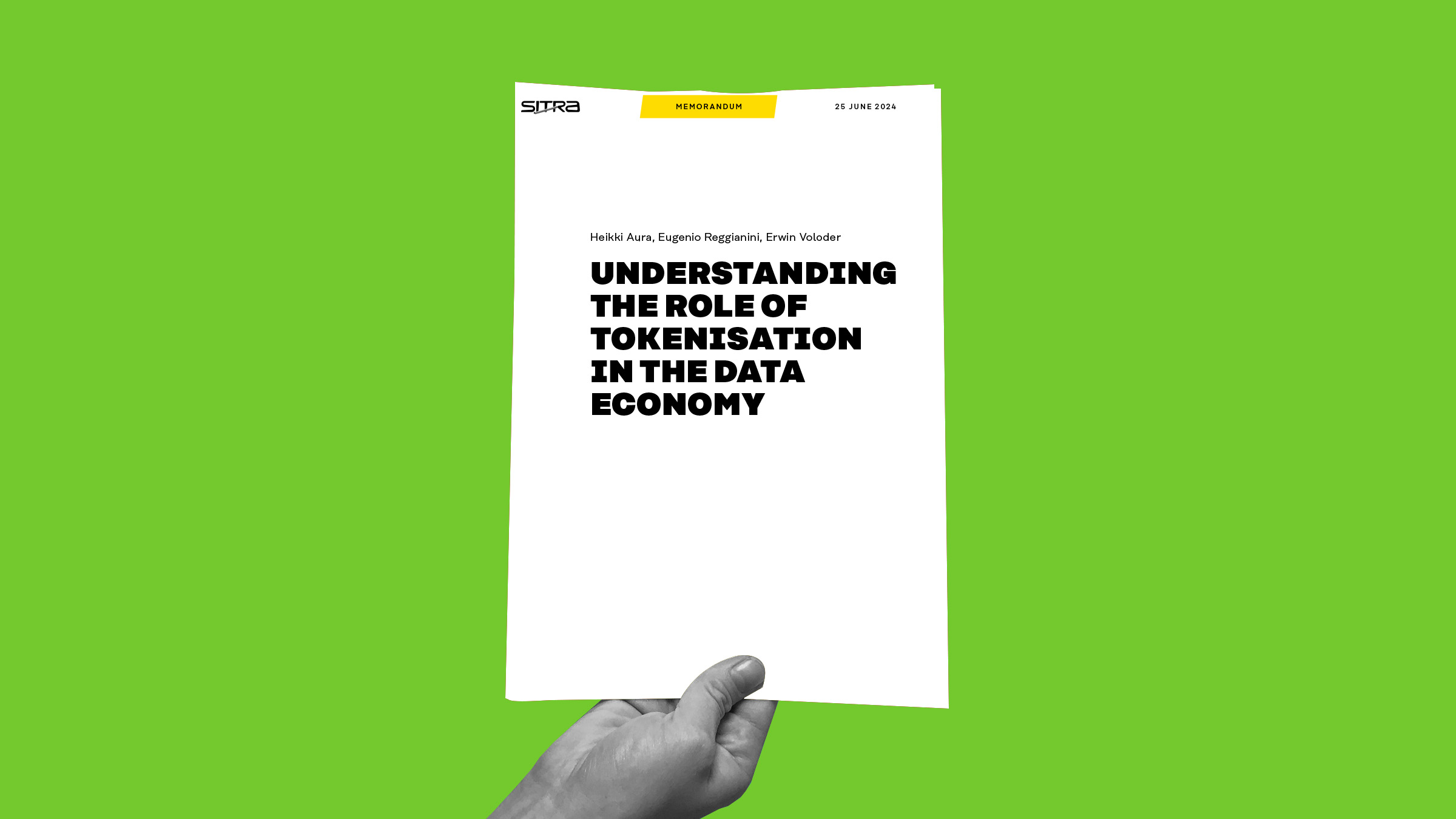


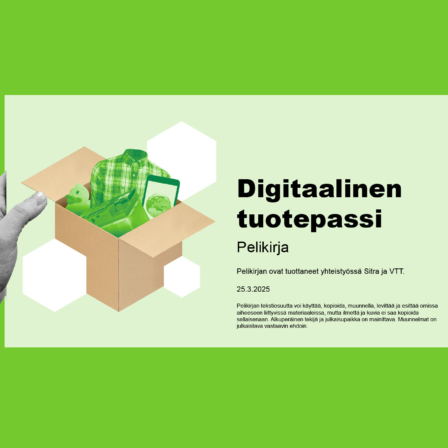
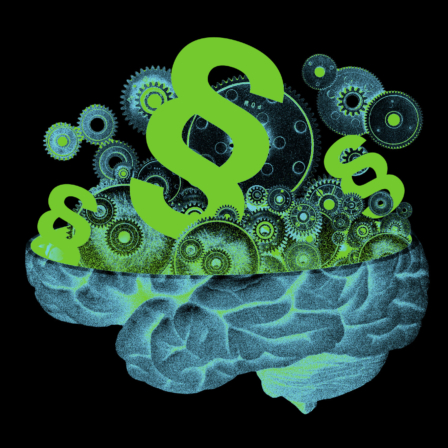
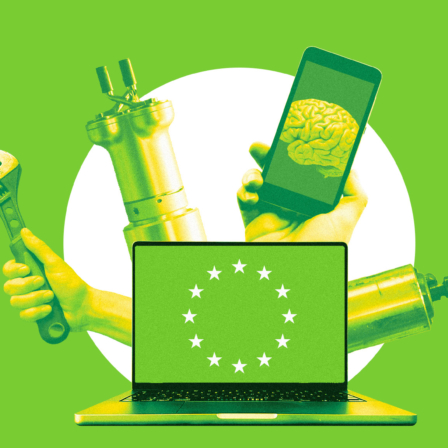
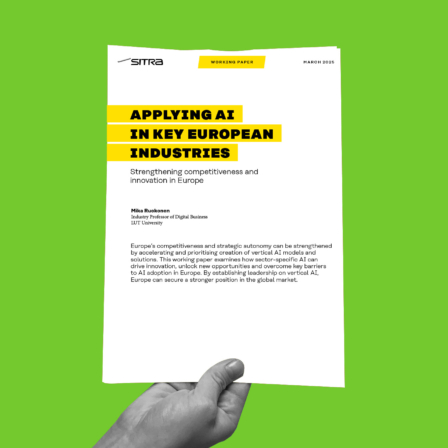

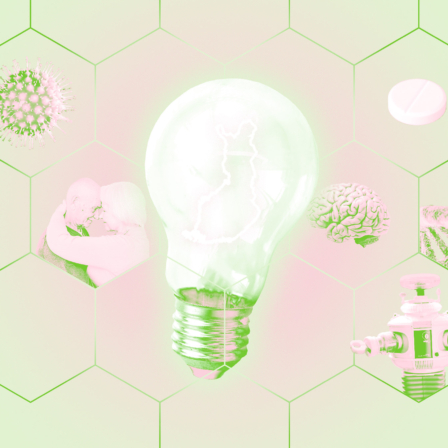

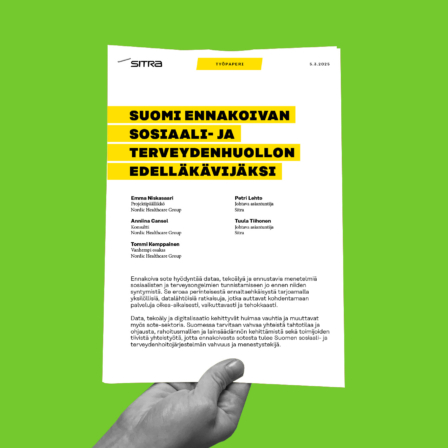

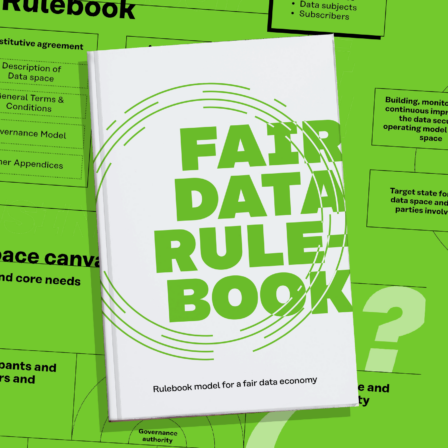




Recommended
Have some more.